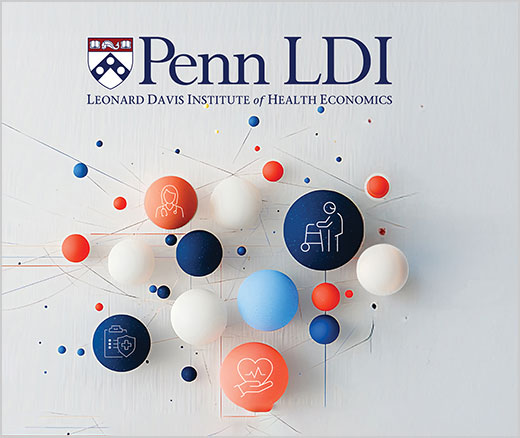
A New Era in Treating Dementia
New Therapies Inspire Hope, Even as Access and Treatment Risks Continue to Challenge Patients and Providers
Improving Care for Older Adults
Blog Post

Norma Coe is a rare breed, a renowned economist who studies long-term care and served as a front-line caregiver for both of her husband’s parents.
Coe’s father-in-law lived with her family for six years, and she fortified her own caregiving with the formal care of experts. She tapped colleagues at Penn’s School of Nursing to advise on when he needed to be hospitalized during the pandemic for congestive heart failure. And she invited in formal home care providers to help after his hospital stays so he could recover at home. The effort paid off, enabling her father-in-law to live at home until the last week of his life.
It wasn’t always easy, admits Coe, LDI’s director of research and a Professor of Medical Ethics and Health Policy at the Perelman School of Medicine. “If I found it hard to navigate the system after studying it for almost 20 years, it made me more sensitive to the expectations we have for family caregivers in figuring all of this out,” she said.
In her latest study, Coe returned to caregiving, and tested whether the combination of family and formal care at home—a growing but still unusual arrangement—led to better health for individuals than either approach alone.
The combination turned out to be better for the ailing person’s physical and mental health. The work was unusual because it measured the impact of providers—both formal and informal—on patient outcomes. Most studies focus on locations, comparing care at home to care at other sites, Coe said.
As she well knows, the U.S. long-term care system is a spotty affair. Calling it a system might be an overstatement. While the very poor can get long-term care through Medicaid and the wealthiest can pay out-of-pocket, the middle class enjoy few options and must find the money or impoverish themselves before Medicaid coverage starts.
Family members often fill those gaps, saving the government billions of dollars at the expense of the caregiver’s earning power.
But, as in many homes, caregiving is a bit of a tradition in Coe’s family. Her two aunts cared for her grandmother until her passing, enabling her to stay at home until the end, which was her fervent desire.
Several siblings provided care for her mother-in-law, who had dementia. “When it became unsafe for her to live at home, we had to move her into memory care,” she recalled. “I provided a lot of care during her stay there.”
Caregiving is a research focus for Coe. Two of her three most-cited studies on Google Scholar deal with the subject, documenting the financial and health costs of caregiving. One showed how caregiving leads women to earn less than non-caregivers. The other found that caregivers’ depressive symptoms rose over time.
Coe and her team launched the most recent study after noting the growth of people in the community with disabilities who had both family and formal caregivers. “We wanted to see if there were benefits or costs to this arrangement,” she said.
It turns out there were. Having both led to higher self-reported mobility and less depression compared to those receiving family care only.
“Individuals receiving both formal and family care have a 41.4 percentage-point higher likelihood of reporting being in good health, a 14.6 percentage-point higher score on mobility, and 11.0 percentage-point lower likelihood to report depression, compared to individuals receiving family care only,” the authors wrote.
The team does not know how these health gains were achieved or how families and formal care providers divided up tasks. But that’s a good target for future research.
“As a caregiver, I think it is hard to ask for and get help,” she noted. “Professional help could actually be beneficial to the loved one, so it isn’t necessarily selfish to share the responsibility.”
Going forward, “we need to be thinking about how to get professionals and families in position to provide care in the long-term, while we face a severe shortage of home care workers.”
The study “Home-Based Care Outcomes: Does the Care Provider Matter?” was published on April 28, 2025 in Health Economics. Authors include Norma B. Coe, Chuxuan Sun, Courtney H. Van Houtven, Anirban Basu, and R. Tamara Konetzka.



New Therapies Inspire Hope, Even as Access and Treatment Risks Continue to Challenge Patients and Providers

Penn LDI Senior Fellow Yong Chen Is an MPI in the 10-Institution NIA Undertaking

Precision Diagnostics Give Patients Clearer Answers About What Drives Cognitive Impairment

Findings Suggest That Improving Post-Acute Care Means Looking Beyond Caseloads to Nursing Home Quality

Ongoing Innovations in Diagnostics and Treatments Can Drive Cultural Openness in Discussing Causes, Experiences

New Program Launches Research Initiatives Focused on Improving Primary Care for Older Adults